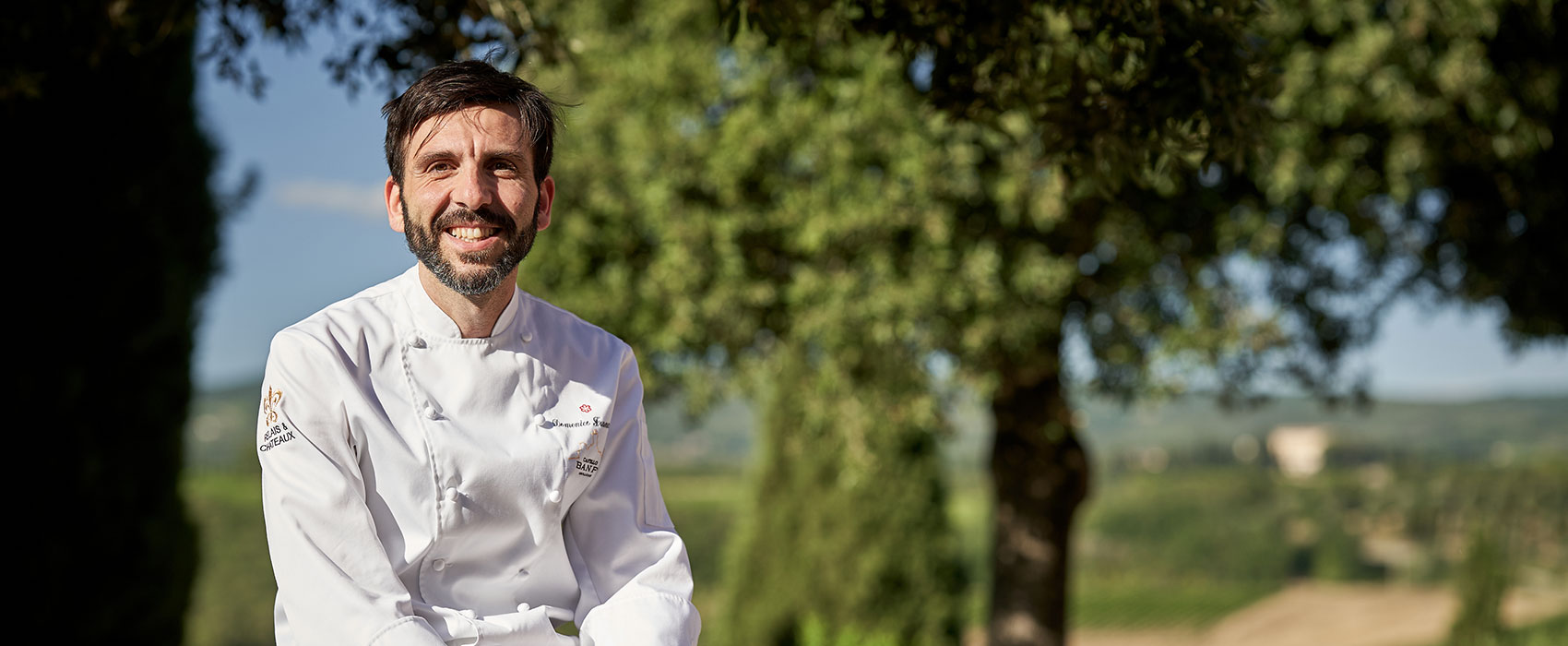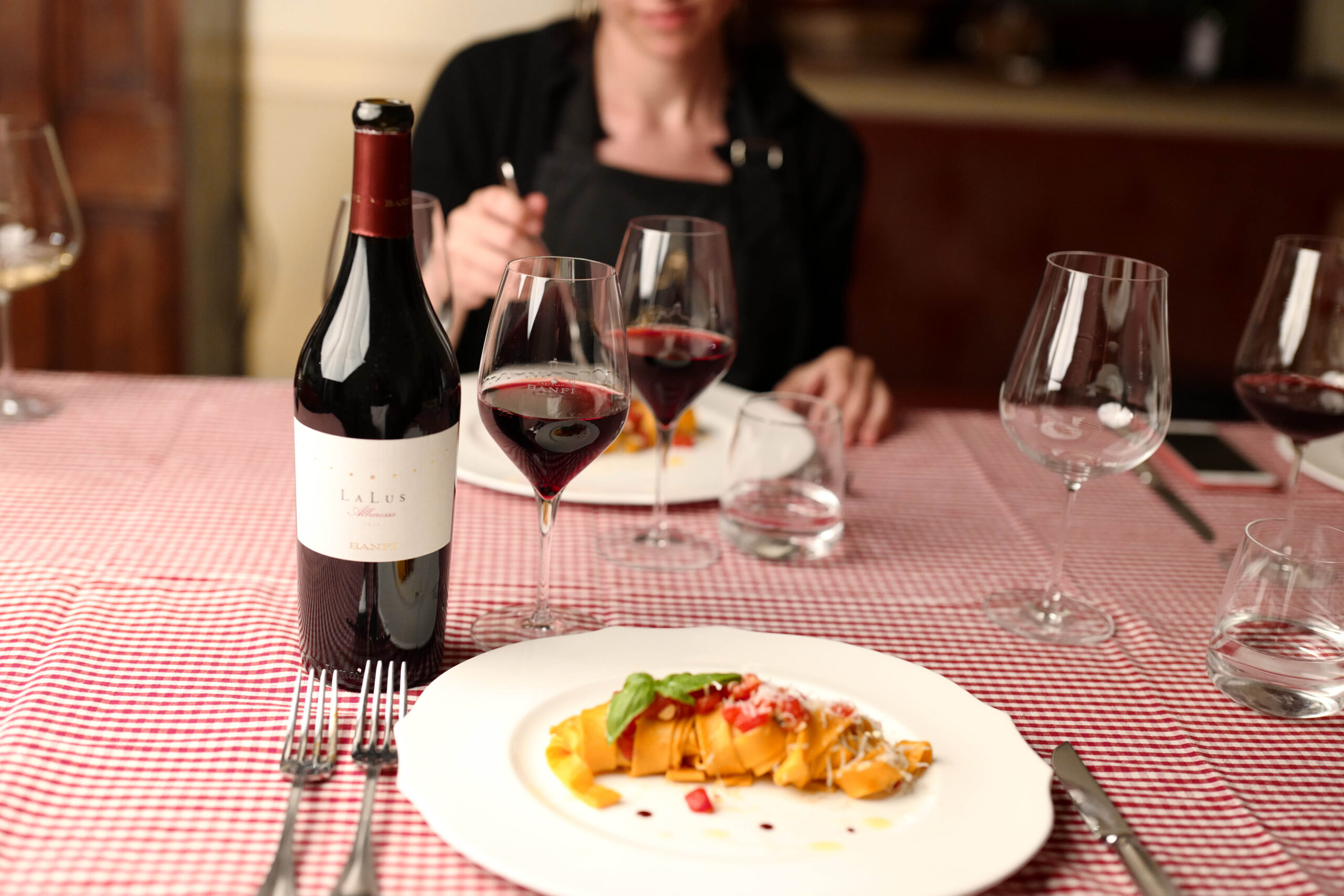There are several Michelin-starred restaurants in Tuscany. Among them is La Sala dei Grappoli restaurant at Castello Banfi Wine Resort.
Michelin stars and Tuscany: Castello Banfi's restaurant awarded
Tuscany's fame and its supremacy among the most sought-after year-round tourist destinations is also due to the hospitality of its inhabitants, the excellence of its hotels and the wealth of food and wine delicacies. Here, local products boast prestigious recognitions such as DOP and DOC, testimony to their authenticity and superlative quality, while the region's wines, renowned and loved throughout the world, are considered masterpieces that enhance the very essence of the territory. But the art of Tuscan cuisine does not stop at the quality of its ingredients: it is also reflected in the impeccable service and preparation of traditional dishes. And it is precisely to this constant commitment to excellence that we owe the presence of numerous Michelin-starred restaurants in Tuscany in 2023.
The Michelin Stars, in fact, represent the pinnacle of gastronomic perfection and are awarded only to a few excellences in the field of catering. The presence of numerous starred restaurants in Tuscany is a tangible sign of the passion and dedication of the region's cooks and chefs, who with creativity and skill rework traditional dishes into authentic culinary works of art.
One way to choose where to eat in Tuscany is to follow the Michelin guide and rely on the experience of leading experts in the food, wine, and hospitality industry.
Michelin stars: the history
The history of Michelin stars and the world-famous guide of the same name has its roots in the distant past, in 19th-century France, when there were only a few thousand cars on the road.
The connection between cars and the most renowned restaurant guide may seem puzzling at first glance, but the mystery is quickly revealed when we discover that the creators of the guide were none other than brothers André and Édouard Michelin, founders of the tire company of the same name. Their goal was to publish a free guide for French travelers, with the aim of promoting tourism and thus stimulating demand for cars and e, , consequently,tires.
Over the years, the Michelin Guide became increasingly popular thanks to its accuracy, objectivity, and detail, and began to become a point of reference for all travelers who wanted to treat themselves to a high-quality food and wine experience. It was only in 1926 that food critics began awarding the famous “Michelin Stars” to rate the restaurants reviewed.
The evolution
Initially, there were only two categories::
“one star” for excellent restaurants;
“two stars” for exceptional ones.
As the culinary world evolved, the history of the Michelin Stars saw the introduction of the third star in 1931, reserved for extraordinary restaurants that offered unique and unforgettable gastronomic experiences, as Michelin-starred restaurants in Tuscany still do today. These stars quickly became synonymous with culinary excellence and attracted the attention of chefs and restaurant owners around the world.
In the following years, the Michelin Guide expanded internationally, arriving also in Italy and Tuscany and becoming the highest accolade in the field of catering. Today, Michelin stars represent the supreme goal for any ambitious chef and the restaurant that can boast one or more of them is counted among the gastronomic excellences of the world.
Stars are still awarded today by a select team of anonymous inspectors who travel incognito, carefully assessing every aspect of the dining experience, from food quality to technical mastery, from service to atmosphere.
La Sala dei Grappoli
There are 35 Michelin-starred restaurants in Tuscany in 2023: rich in history, art, and culture, this region is also a gastronomic paradise and, as mentioned above, the presence of so many Michelin-starred restaurants in Tuscany is the most authentic testimony to its extraordinary culinary variety and excellence. The cradle of centuries-old gastronomic traditions and prized, authentic local products, Tuscany is also the place where talented Michelin-starred chefs combine tradition with innovation, transforming local ingredients into culinary creations of extraordinary beauty.
This is what happens at La Sala dei Grappoli Restaurant at Castello Banfi Wine Resort, awarded a Michelin star.
The chef
Here, Domenico Francone, a renowned chef of Apulian origin, has created an interesting fusion between the flavors of his native land and refined Tuscan cuisine, particularly that of the Maremma region. His creativity is expressed through his search for the finest ingredients and his exploration of new interpretations of traditional and non-traditional flavors. But what makes La Sala dei Grappoli stand out among Michelin-starred restaurants in Tuscany is also its enchanting and unique location, the historic Castello Banfi, a medieval fortress that stands solemnly among the sunny hills of the Tuscan countryside. The interior room, from which the restaurant takes its name, is superbly frescoed with voluptuous golden grape clusters, and the terrace, in the shadow of the medieval castle walls, offers an unparalleled view of the Banfi estate's vineyards.


